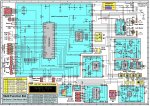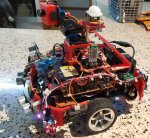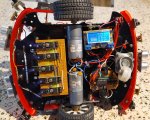Tvmender
Active member
Hi All...
I was posed a question recently by my daughter who is following in my footsteps and studying to be an Electronics Engineer. I left the trade several years ago but still do it for a hobby.
She asked me if its considered lazy or innovative to use multiple microcontrollers in a system to eliminate hardware where possible (where a single device would not suffice). For example, using a PICAXE to simulate the function of a sequencing 4017 eliminating the need for external oscillator and making it infinitely adaptable or replacing a comparator circuit eliminating multiple components all of which would be part of a single circuit.
I said innovative but maybe not commercially cost effective.
Thoughts?
I was posed a question recently by my daughter who is following in my footsteps and studying to be an Electronics Engineer. I left the trade several years ago but still do it for a hobby.
She asked me if its considered lazy or innovative to use multiple microcontrollers in a system to eliminate hardware where possible (where a single device would not suffice). For example, using a PICAXE to simulate the function of a sequencing 4017 eliminating the need for external oscillator and making it infinitely adaptable or replacing a comparator circuit eliminating multiple components all of which would be part of a single circuit.
I said innovative but maybe not commercially cost effective.
Thoughts?



